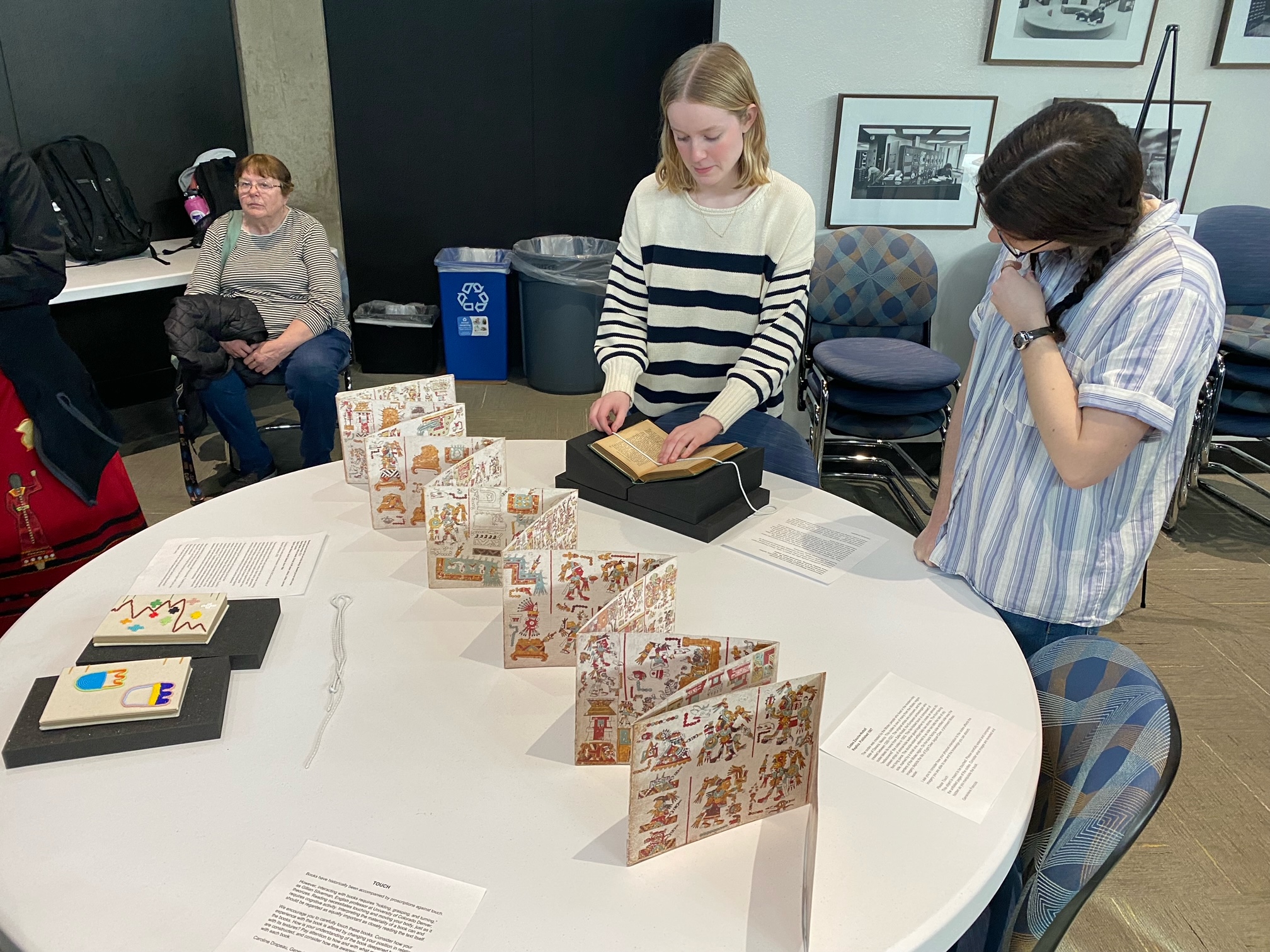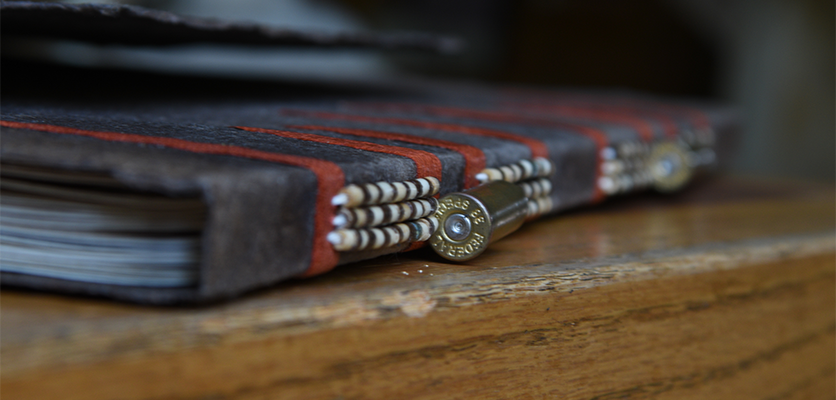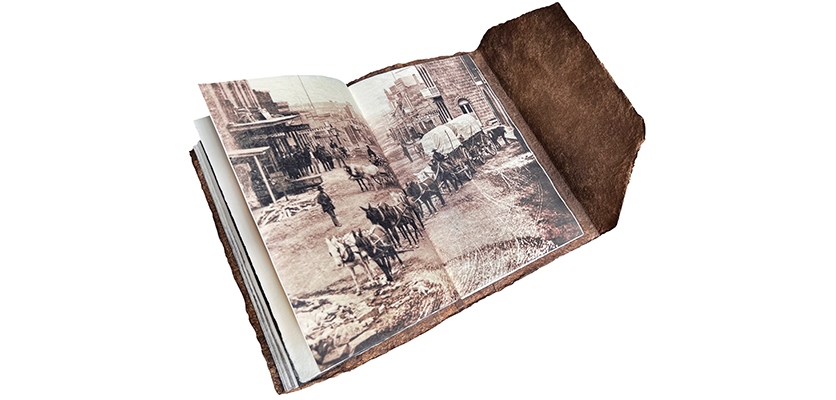Student-led exhibit explores Indigenous creators in McCormick collections
Last winter an undergraduate English course dove into the Charles Deering McCormick Library of Special Collections and University Archives to explore aspects of Indigenous writers and bookmaking. The class’s final project was a pop-up exhibit and presentation by students to the Northwestern community; materials were then displayed in the McCormick reading room.
Taught by professor Kelly Wisecup, the class What Is an Indigenous Book? brought students into contact with a diverse array of materials by Indigenous creators: oral histories, poetry, and the scrapbooks of Jimmy Johnson, the early 20th-century football standout at Northwestern and the Carlisle Indian Industrial School. And there was more unusual fare, such as a cookbook from St. Augustine’s Center for American Indians (which served Chicago communities from 1961 to 2006) and a press kit issued by the Oglala Sioux nation to defend members indicted after a 1973 protest at Wounded Knee, South Dakota.

A book titled The Lost Journals of Sacajewea, by Debra Magpie Earling of Montana’s Bitterroot Salish tribe, was first published in 2010 with a cover of buffalo hide adorned with trade beads and metal cartridge casings. Students analyzed its materiality and how that connects to its narrative, which imagines a voice for the Shoshone tribe member who guided explorers Lewis and Clark to the Pacific Ocean.
“Hands-on access to special collections materials transformed how students practice scholarly methods in the humanities,” Wisecup said. “Working with special collections objects required students to return again and again to what they thought they saw or knew about a book and to challenge their existing bases of knowledge.”
Wisecup added that students engaged in the work with genuine enthusiasm, something librarian Jason Nargis noted firsthand. Nargis, who showed materials to the class, spoke with one student who was “so excited to work with material in the Indigenous language she speaks.”
Students’ curating an exhibit and writing their own interpretive labels allowed Wisecup to challenge her class differently than by a conventional lecture. One student said writing for an exhibit required mastery of key concepts in ways that simply discussing readings in class did not.
“Curating an exhibit shifts how assessment works in the course,” Wisecup said. “Rather than creating a final project to be assessed by me, the students had to figure out how to teach the campus community what they learned, which totally changed the stakes of our work.”

